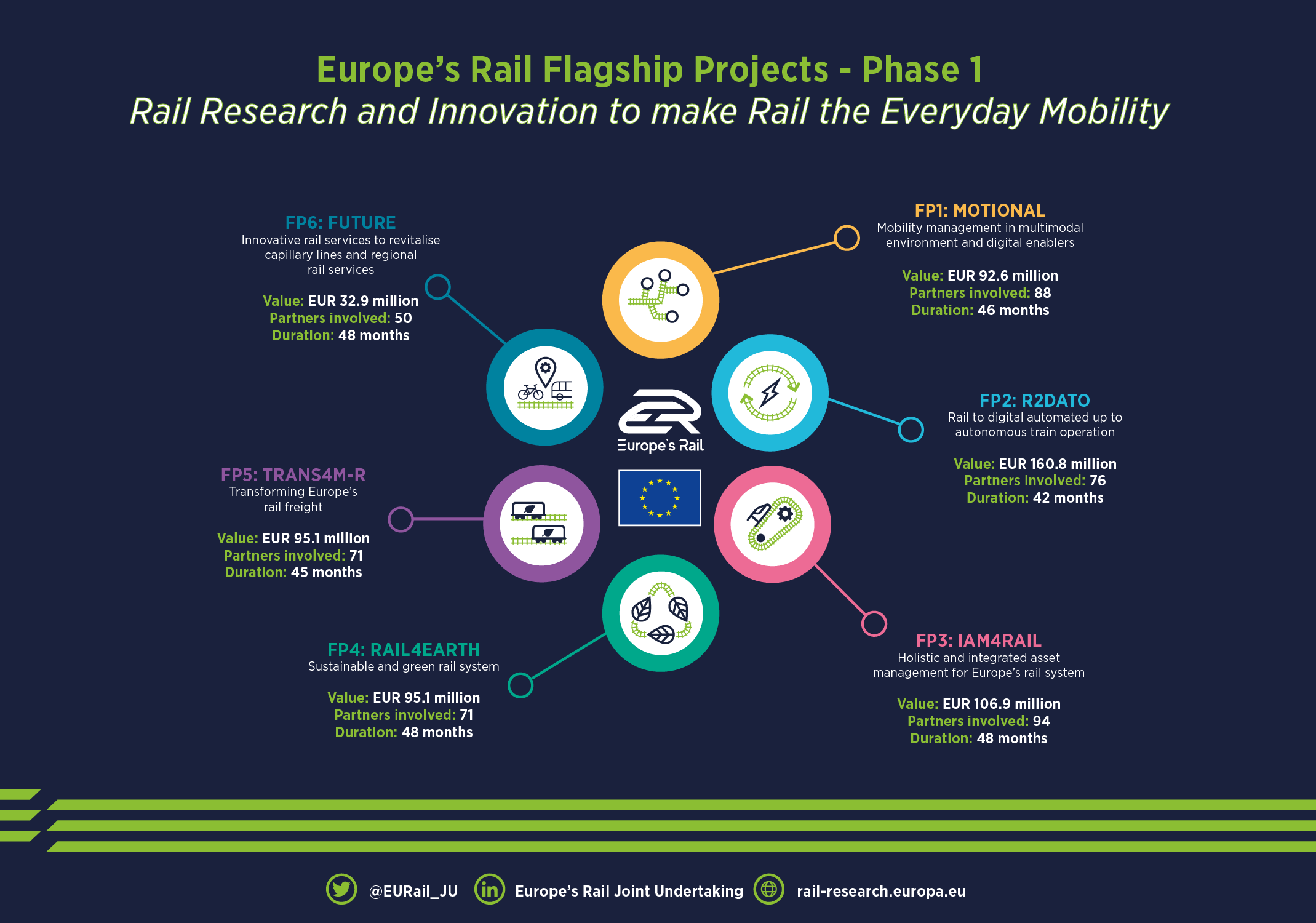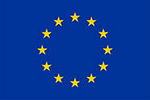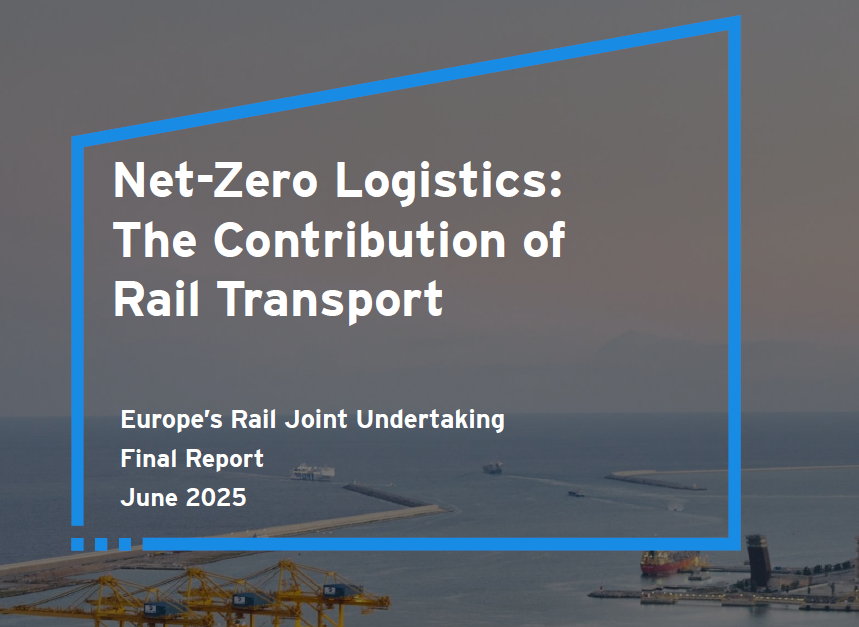Europe must take decisive steps to simplify and modernise its rail systems to strengthen competitiveness,...
Phase 1 of Europe’s Rail will cover key aspects of the railway system in an integrated and coordinated approach, delivering European interoperable solutions as from 2026. Find out about the new Europe’s Rail projects in-depth in article series every month on the Europe’s Rail website. We start with an overview of the six Flagship Projects.

In less than a year after the official launch of the Europe’s Rail Joint Undertaking in presence of the European Commissioner for Transport and the Founding Members, the partnership has kicked-off the first phase of its activities with six large rail research and innovation Flagship Projects (FP) worth over EUR 550 million, involving more than 200 active entities. These FPs, under the partnership’s Innovation Pillar, are set to contribute to delivering European interoperable, reliable, efficient and competitive railway services, for the benefit of the European citizens and businesses. Key results coming from the projects are expected by 2026, feeding the next phases of the partnership’s activities.
The Phase 1 FPs (FP1 MOTIONAL, FP2 R2DATO, FP3 IAM4RAIL, FP4 RAIL4EARTH, FP5 TRANS4M-R and FP6 FUTURE) jointly look at the long-term strategic changes for the European railway system, designed to satisfy the shared customer requirements and operational needs defined within the System Pillar and its architecture, delivering the performance and capacity that will answer the future needs of the clients, hence contributing to the overall sustainability and energy efficiency of transport and mobility.
Where the objective of the Innovation Pillar is to research, design, create, validate and demonstrate at large scale innovative technological and operational solutions via FPs, the System Pillar looks to deliver the future concepts of operations and the underpinning system architecture, therefore, ensuring that the rail system can evolve with a modular approach, providing confidence in investments.
The FPs will provide solutions for full integration, covering traffic management, vehicles, infrastructure, and services, aiming to achieve faster uptake and deployment of innovations. The new FPs will exploit the immense potential for digitalisation and automation to reduce rail’s lifecycle costs, increase its capacity and enhance its flexibility and reliability, benefitting from the impactful results of the Shift2Rail Programme.
They will also directly contribute to the overarching objectives of the European Union, brought forward by the European Green Deal, the Sustainable and Smart Mobility Strategy and the Fit for 55 Package. With these new projects, Europe’s Rail does not only facilitate research and innovation activities to deliver an integrated European railway network, but also brings a sustainable and resilient rail system by developing zero-emission, silent rail system, climate resilient infrastructure and applying circular economy to the rail sector, crucial in the 21st century. Strong emphasis is also placed on rail freight and intermodal transport services to deliver green freight, with the Digital Automated Coupler (DAC) as a key technical enabler, fully integrated in the logistics value chain and utilising the potential of automation and digitalisation.
The Flagship Projects, funded under Europe’s Rail, bring together the entire European rail sector allowing it to transform itself through an integrated system approach covering European rail network management, automation and digitalisation of rail operations, sustainable and resilient systems, rail freight in the supply chain perspective and regional and capillary lines.
Flagship Project 1: MOTIONAL
FP1 MOTIONAL, worth EUR 92.6 million with 88 partners, will address network management planning and control, as well as mobility management in a multimodal environment, including digital enablers. It will contribute to the achievement of the Single European Rail Area by researching, developing, and delivering a flexible, efficient, resilient and high-capacity European rail network. The project will also facilitate the implementation of a railway digital enabler and digital twin environment, where all digital elements of the system can interact symbiotically together in a coherent and interoperable way. The partners will jointly specify, develop and demonstrate new capabilities, setting the basis for a truly European planning, traffic management and mobility management applications towards green, digital and safe solutions for the rail sector.
By 2026 and in close collaboration with the five other projects, FP1 MOTIONAL will deliver results that will help the sector improve rail network management strategic and tactical planning, integrate planning systems and processes, including cross-border planning, support timetable optimisation, as well simulate operational feedback.
Increased resilience of a connected ‘real time’ rail network will be at the core of the project, looking at the integration of Traffic Management Systems (TMS) and processes, including cross-border traffic management, as well as improving resilience and efficiency of disruption management at European level. Linking TMS to ATO/C-DAS for optimised operations will be substantially researched with a focus on automated decisions and decision support for traffic management optimisation.
The project will benefit the entire rail ecosystem by improving integrated rail traffic within door-to-door mobility, in close collaboration with FP6 FUTURE, including integrating rail with other transport modes and services for inclusive rail-based mobility and anticipating demand, leading to improved resource utilisation.
FP1 MOTIONAL will also address digital process scenarios, digital asset engineering, digital twins, conceptual data model and semantic dictionary evolution, as well as federated data spaces.
Flagship Project 2: R2DATO
FP2 R2DATO, worth EUR 160.8 million with 76 partners, will contribute to delivering digital and automated up to autonomous train operations. The objective of the large consortium is to jointly research, develop and deliver the next generation of European automated train control (ATC) system and scalable automation in train operations to optimise operations and increase capacity on the network.
The project will demonstrate technical and functional enablers such as ATO GoA3/4 over mixed radio based ETCS levels, hybrid level three, moving block and Train Integrity Monitoring System (TIMS), connectivity, perception, train positioning, automated functions and digital register. It will also demonstrate remote driving and command in depots and yards, including perception systems. Not only that, FP2 R2DATO will also develop the next generation automated train control system, with modular onboard and trackside ATC architectures, at proof-of-concept stage, in close collaboration with the Europe’s Rail System Pillar.
By 2026, FP2 R2DATO aims to develop a proof-of-concepts and validation in laboratory and in field for virtual coupling, self-driving wagons, autonomous path allocation, and validation and certification. It will also demonstrate a functional open coupling system prototype in a relevant environment and a modular hardware platform using architectural software design patterns and methods.
Flagship Project 3: IAM4RAIL
FP3 IAM4RAIL, worth EUR 106.9 million with 94 partners, will ensure holistic and integrated asset management for both infrastructure and rolling stock for the European rail system. The objective is to jointly and holistically research, develop and deliver innovative solutions, including definition of technical requirements and standards, methods, and services. It will be based on the latest leading-edge technologies and concepts to minimise asset life-cycle costs and extend life cycles while meeting safety targets and improving reliability, availability and capacity of the railway system, addressing both infrastructure and rolling stock.
One of the major focus points of FP3 IAM4RAIL until 2026, will be the integration of asset condition information into the traffic management system, enabling optimisation of train routing decisions and improving the overall life cycle of monitored assets, in full coordination with FP1 MOTIONAL. Additionally, rolling stock asset management, including both on-board and wayside technologies will be designed, tested and validated for intelligent rolling stock asset management solutions.
Touching upon infrastructure asset management, FP3 IAM4RAIL will addresses the long-term maintenance and costs, track systems, innovative multi-purpose Intelligent Asset Management System (IAMS)m starting with the prototypes developed in Shift2Rail Technical Demonstrators on infrastructure applications, civil assets, such as structures, earthworks and geotechnics. In close collaboration with FP1 MOTIONAL, FP3 IAM4RAIL will also investigate the use of railway digital twins’ implementation across the entire rail system.
The project will look at worker comfort and safety by creating robotic platforms for railway interventions, exoskeletons and augmented reality solutions to support railway maintenance.
Flagship Project 4: RAIL4EARTH
FP4 RAIL4EARTH, worth EUR 95.1 million with 71 partners, will further address sustainability goals of European railways. The objective is to research, develop and deliver innovative solutions and services based on leading edge technologies to further minimise the overall energy and resource consumption and low environmental impact that the railway system has, to maintain its competitive edge but also to make it healthier, more attractive and provide resilience against climate change at a reduced total cost of ownership.
By 2026, the project will investigate the alternatives to diesel energy solutions for rolling stock, with a focus on high performance battery powered regional trains and hydrogen hybrid locomotive, leveraging for cooperation already established by EU-Rail with Clean Hydrogen JU and the BATT4EU co-programmed partnership. A major attention will also be placed on energy consumption in rail infrastructure and stations, including hydrogen refuelling station, smart low consumption electrical infrastructures with local renewable energy sources, ground energy storages and smart stations.
In order to ensure the rail system becomes more resilient to climate change, natural disasters and unpredictable events, FP4 RAIL4EARTH will develop simulation tools on European climate and noise, and develop optimised components for noise and vibrations minimisation.
FP4 RAIL4EARTH will also develop air-less solutions, such as electro-mechanical braking systems, optimised motors and gearboxes, Heating Ventilation and Air Conditioning (HVAC) systems using green refrigerants or new cooling technologies, including contaminant removal, as well as aerodynamic optimisation. To improve the attractiveness of train interiors, on-demand comfort for users, such as access, lighting, thermal and acoustic comfort will be developed, including reinforcing the facility to adapt rolling stock interiors to support the increase of capacity of the rolling stock.
Flagship Project 5: TRANS4M-R
FP5 TRANS4M-R, worth EUR 95.1 million with 71 partners, will ensure the transformation of Europe’s rail freight. The objective is to make rail freight more attractive through digitalisation and automation of operational functions and processes, including those at the intersection with other transport modes, as well as increasing the efficiency of the information and layers of transport via researching, developing and delivering innovative interoperable and scalable solutions. FP5 TRANS4M-R brings together end-users, large industry, railway undertakings, covering the entire value chain to deliver fully digital freight train operations by means of development of interoperable DAC-enabled technologies and applications ensuring a seamless operation across actors, transport modes and countries.
A major focus of FP5 TRANS4M-R is to develop by 2026, a fully digital freight train with DAC types 4 and 5, including energy and data supply, hybrid couplers and automated brake tests. Distributed power and electro pneumatic brake will also be developed for further demonstrations in 2027 and 2030.
FP5 TRANSM-R will also contribute to the development of systems and solutions for automated shunting operations, real-time data management and processing to improve cross border timetable planning, timetable management and train path ordering. Development of standardised railway checkpoints to automate handover controls and dynamic yard/terminal management systems will be at the core of the project.
Flagship Project 6: FUTURE
FP6 FUTURE, worth EUR 32.9 million with 50 partners, will propose innovative rail services to revitalise capillary lines and regional rail services. The objective is to rejuvenate and ensure long term viability of regional railways by decreasing the total cost of ownership, such as the cost per kilometre, both in terms of Operational Expenditure (OPEX) and Capital Expenditure (CAPEX), while offering a high quality of service and operational safety to staff and end users. FP6 FUTURE also aims to increase customer satisfaction, including booking and ticketing solutions in an integrated mobility service, to become an attractive and preferred choice of transport mode.
In terms of regional rail systems, FP6 FUTURE will demonstrate a single integrated operations control centre covering interlocking, radio blocking and traffic management for regional lines that are not functionally or operationally connected with mainline. In collaboration with FP2 R2DATO, FP6 FUTURE will demonstrate simple on-track radio network related with cost effective communications, supporting the latest communication technology applications, minimising civil works and energy consumption, to the achievement of a cost-effective train.
FP6 FUTURE will also propose, in collaboration with FP1 MOTIONAL, an application for traffic management systems for regional lines improving resilience of a connected rail network, optimising train operations, including during disturbing events and considering demand. The project will also investigate the use of assets, by demonstrating a systemic approach with the implementation of different railway assets for cost-efficient wireless, energy self-sufficient wayside components, such as Control Command and Signalling (CCS) trackside. Not only that, but FP6 FUTURE will also address track vacancy detections and signalling.
A key priority for FP6 FUTURE will be developing solutions for the end-users, with cost-efficient integration of on-board information of multimodal services integrating regional multimodal services such as carsharing. The project will address passenger congestion rate monitoring, flow optimisation as well as a low-cost passenger information system for regional services.
















